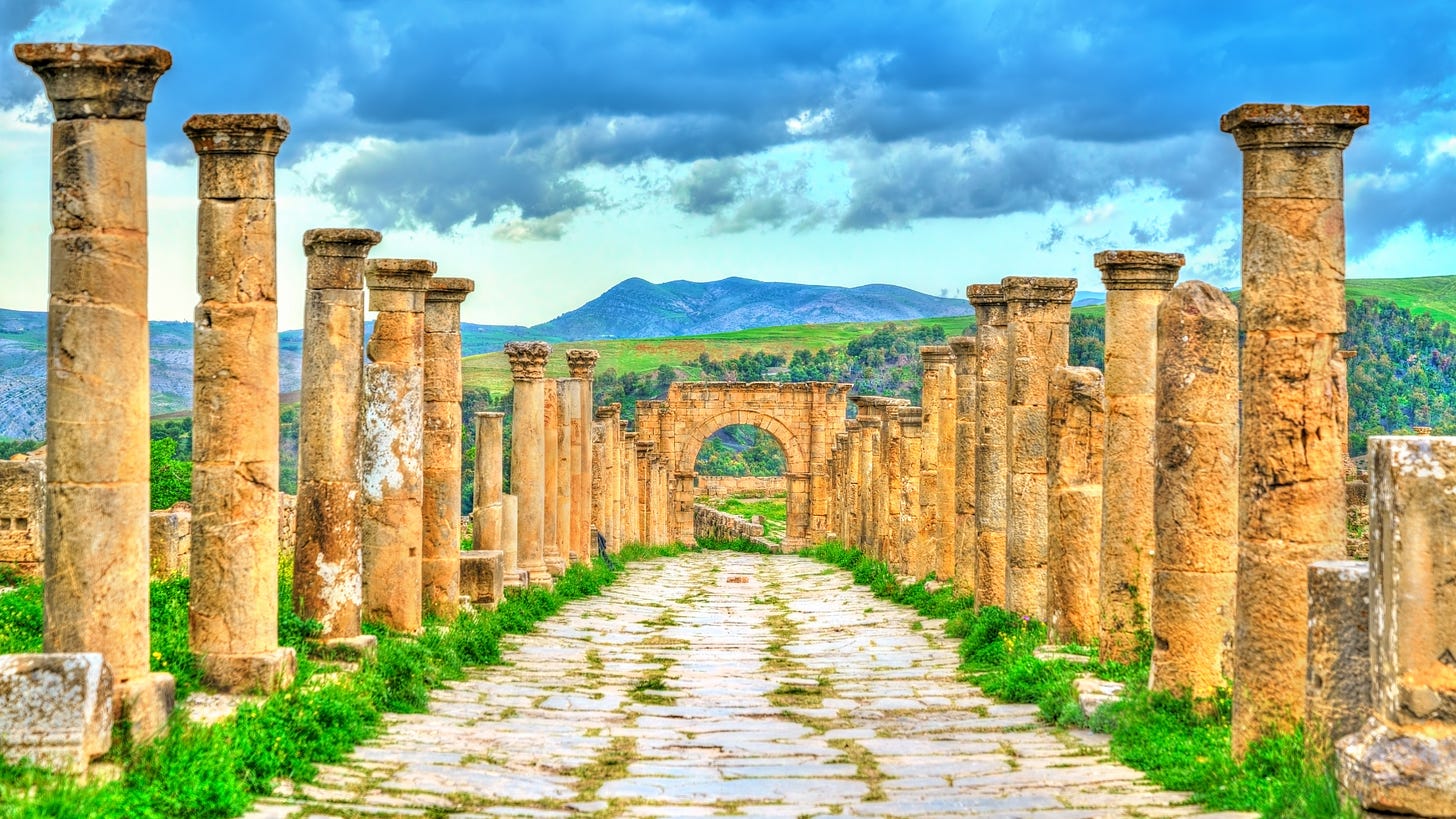Leopold von Ranke wrote (Univ. Hist. p. 61.), “The genuine historical character which we recognise in the story of Israel as given in the Book of books makes the absence of similar records in the case of the neighbouring nations all the more marked. There is extant an ethnographical document, the so-called List of Nations, which perhaps does not really belong to the very early times to which it is assigned, but which enables us to conceive the way in which Israel figured to itself the human race and its several nationalities, probably in the time of the judges or of Samuel.”
Those who are familiar with the content of this Substack already know that Israel, according to Porphyry, cited by Eusebius, was a Phoenician name for Kronos (citations are included in the members portion of this article), which is Time, reckoned by the sun. The Phoenician empire thrived from 1500-300 BC. This means all the stories related to Israel as a geographical location are much younger than 300 BC. Even if authentic, the Babylonian system cannot be older, given that Israel is mentioned as a geographical location in cuneiform inscriptions. Ranke entertains the status quo narrative, that all nations appear as equal, free, and akin to one another through their common ancestor Noah. He brings up the Phoenicians (Ib. pp. 61, 62.), “In the other direction, through the voyages of the Phœnicians, they had become acquainted, at least by hearsay, with the lands of the Caucasus and the coasts of the Mediterranean. The List of Nations shows they had some notion of the tribes of the Caucasus, of some commercial populations on the Black Sea, of the islands of the Mediterranean, and perhaps also of Gaul and Spain, signified by Rodanim and Tarshish; but we can scarcely suppose that they were really acquainted with all the regions and the inhabitants included within these extreme limits.”
Again (Ib. p. 62.), “The Hebrews were closely connected with the Phoenicians, by nationality, situation, and intercourse.”
When looking at the languages of ancient Italy, specifically the Etruscans, their alphabets are almost identical to Phoenician, which is almost identical to Pelasgian, and it was conceded by Dionysius of Halicarnassis, citing Myrsilius of Lesbos, that the same people were called by the rest of the world both Tyrrhenians and Pelasgians. William Betham wrote (Etru. Celt. p. 10.) “It has been said that this language was Hebrew, or had a strong affinity to it; but the best Hebraists have tested it without success, for the results have not enlightened the world. The few existing translations through the Hebrew are scarcely vouched by their authors. If the Hebrew and Phœnician were sister tongues the affinity would be palpable and universal, not confined to a few words or sentences. The Hebrew has been preserved without change with the greatest care and anxiety, and therefore ought to be found identical, if at all akin to the Phœnician. The Celto-Etruscan has not only an affinity, but its similarity is almost universally applicable to every Phœnician and Etruscan inscription to which it has been applied, and is, therefore, the true key, every division of which fits the words, and opens the long hidden treasure to our view.”
There seems to be a lot of Phoenician artifacts that came to light which used the more modern variations of their alphabet, not the more ancient versions written about long ago. These artifacts aren’t written about by any of the authors prior to the 1850s that I’ve read. The more modern alphabet corresponds to the modern Hebrew alphabet. Archaeology became much more advanced and safer since then, but the artifacts using more modern letters, claimed to be Phoenician, appear to be a product of Phoenician influence, not origin. This suspicion could be wrong, but in The Real Universal Empire, I show the work of others that demonstrates the Irish and the remnants of Punic (Sicilian Phoenician), salvaged from Malta in the 18th century, are without a doubt from the same parent, if not the same language only separated by distance and time. Here’s a sample:
Revisit the following article I published that showed the alphabets of the Irish and how it pertains to Phoenician. While I’d love to include them into this article, I don’t want to keep recycling the same extensive posts for my paid members, even though it is relevant.
Fresh Batch #100: Irish Use of the Etruscan God Aesar
Edward O’Reilly, author of the Irish Dictionary, wrote in letter to William Betham (Irish Antiquarian Researches, p. 29) citing General Vallancey, “The learned General further informs us, that he was “favoured with drawings of several boxes of this kind, fabricated since Christianity, being ornamented with crucifixes” but he adds, “this has no marks of that kind, and appears to be the Druidical LIATH MEISICITH, or Liath Fail, in which
To really appreciate my perspective and learn the system I write about, and the ramifications on the chronological record of history, invest in the the entire Spirit Whirled series and The Real Universal Empire. For those who don’t like to read, download the Substack app to your phone and have it narrate each article, that way you can listen while driving or working.







Become a member to access the rest of this article.
Keep reading with a 7-day free trial
Subscribe to Ancient History, Mythology, & Epic Fantasy to keep reading this post and get 7 days of free access to the full post archives.







